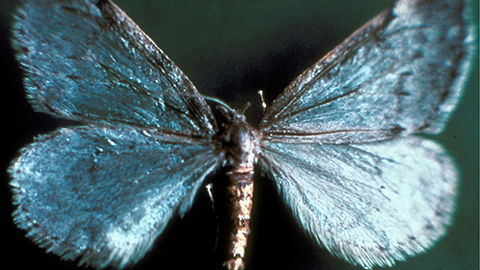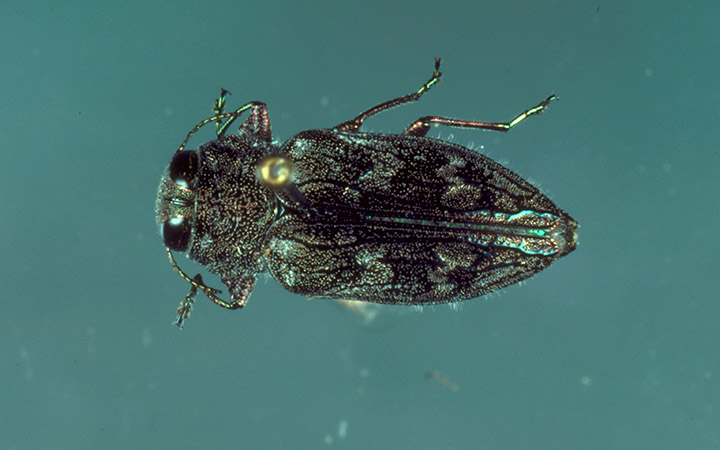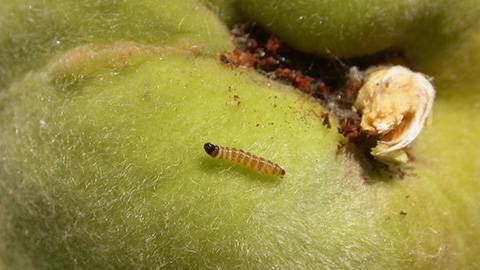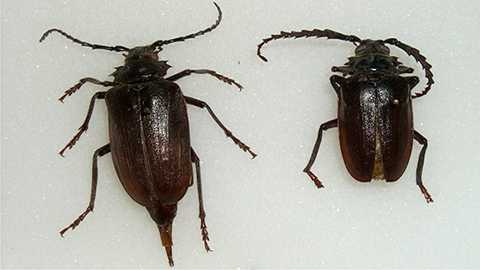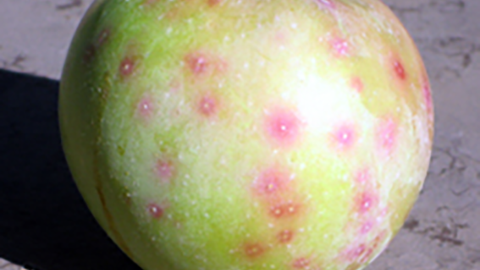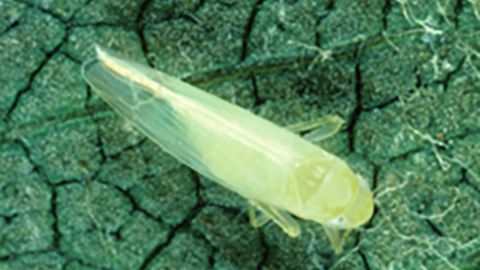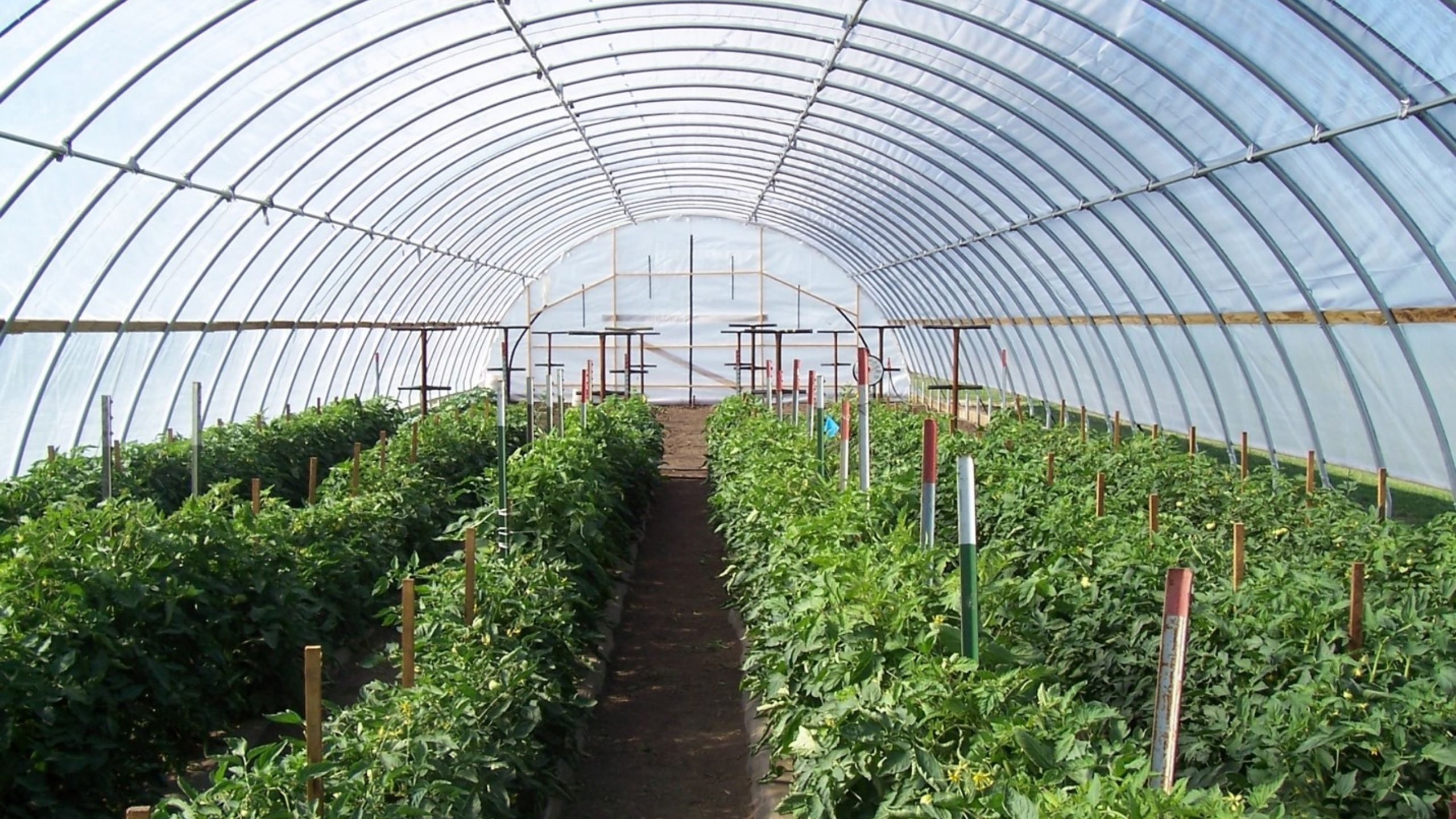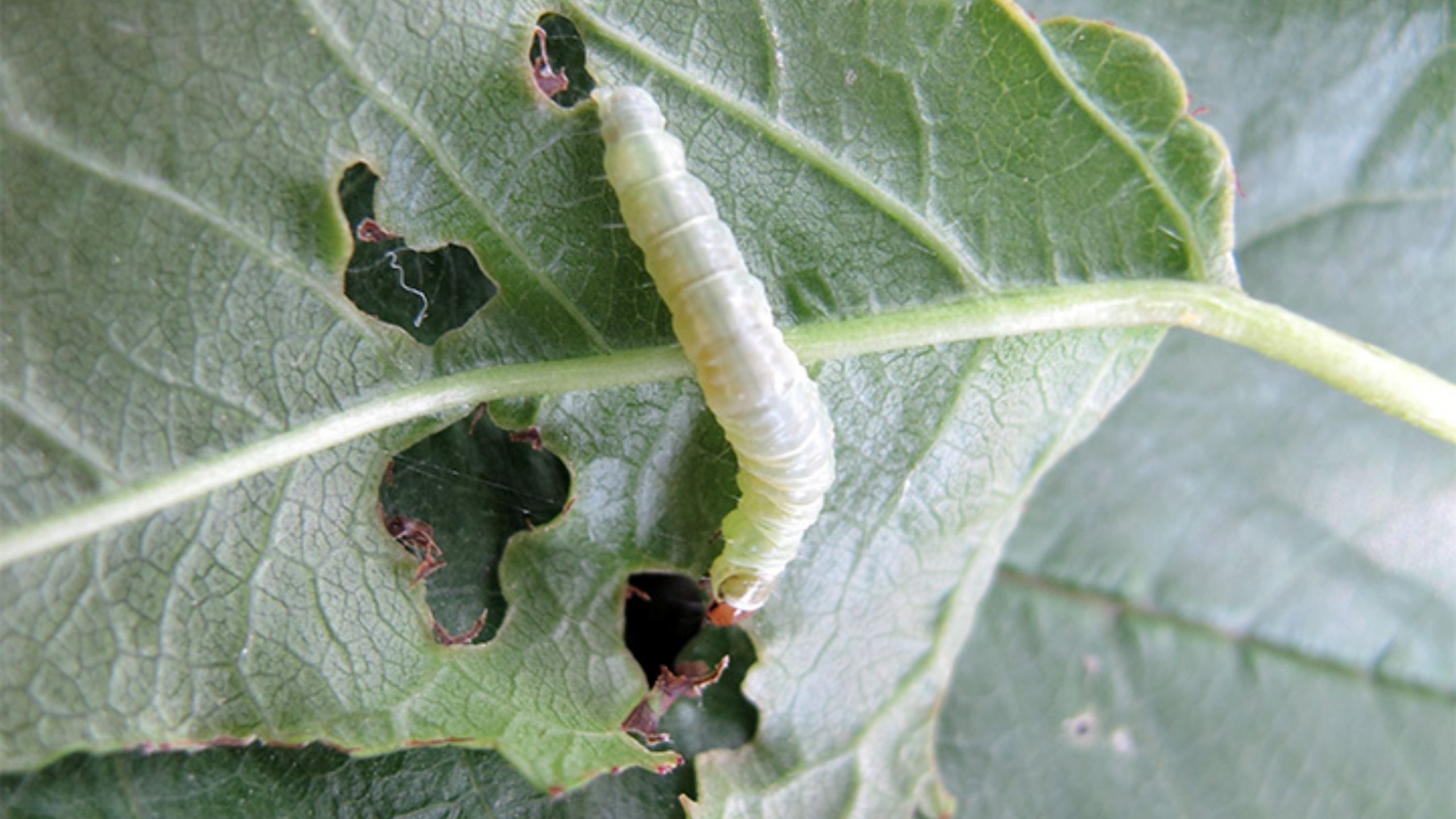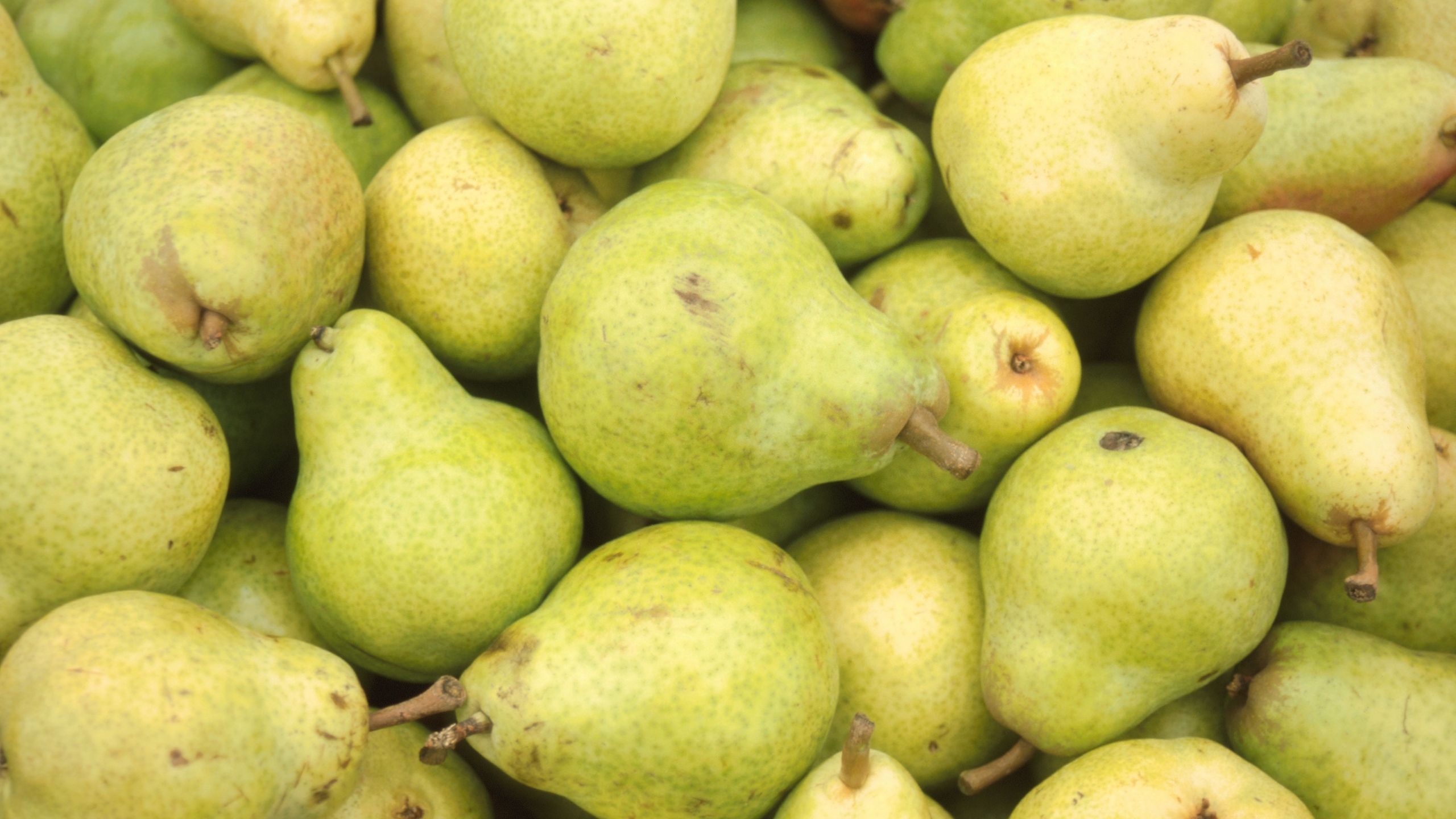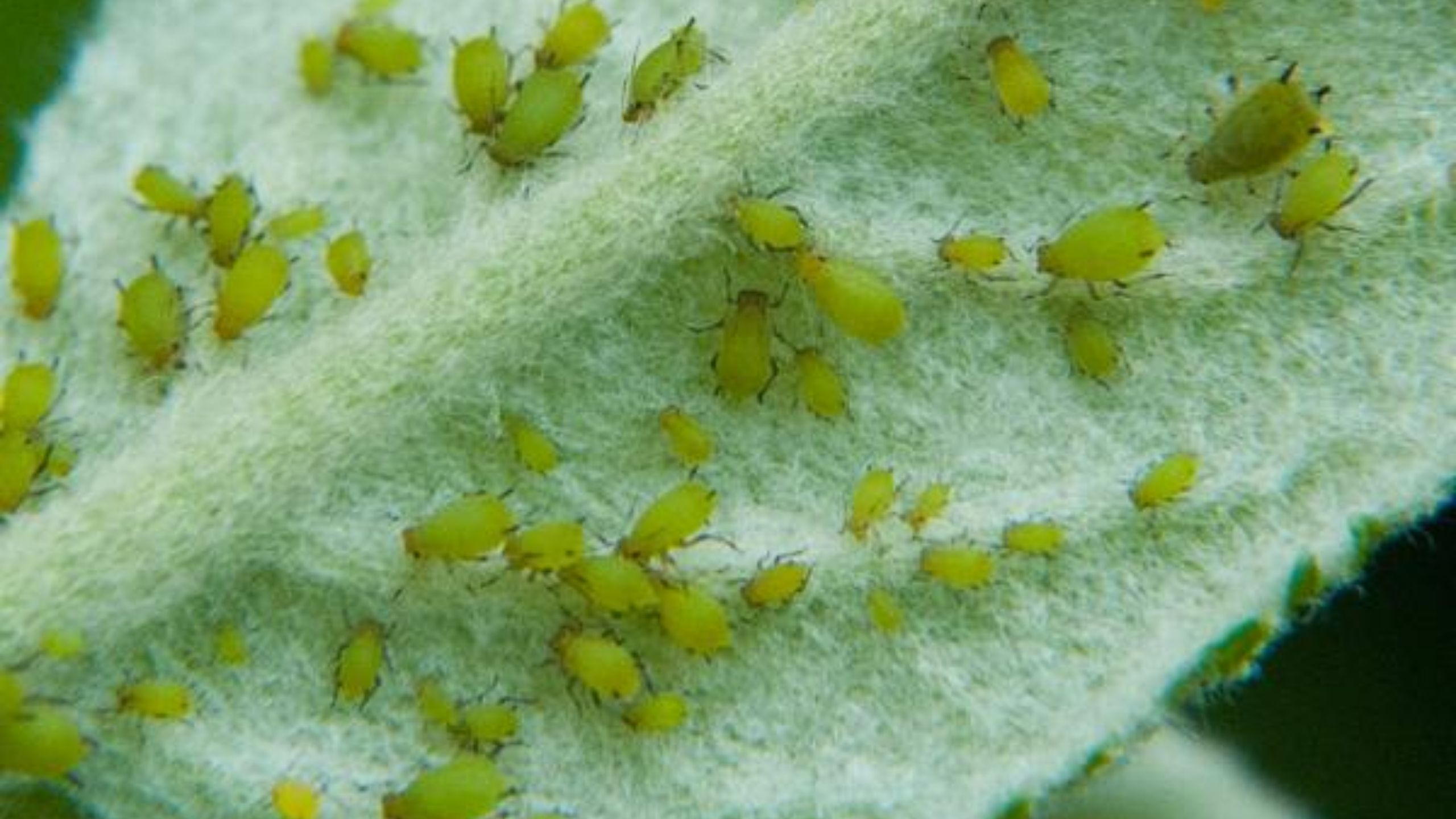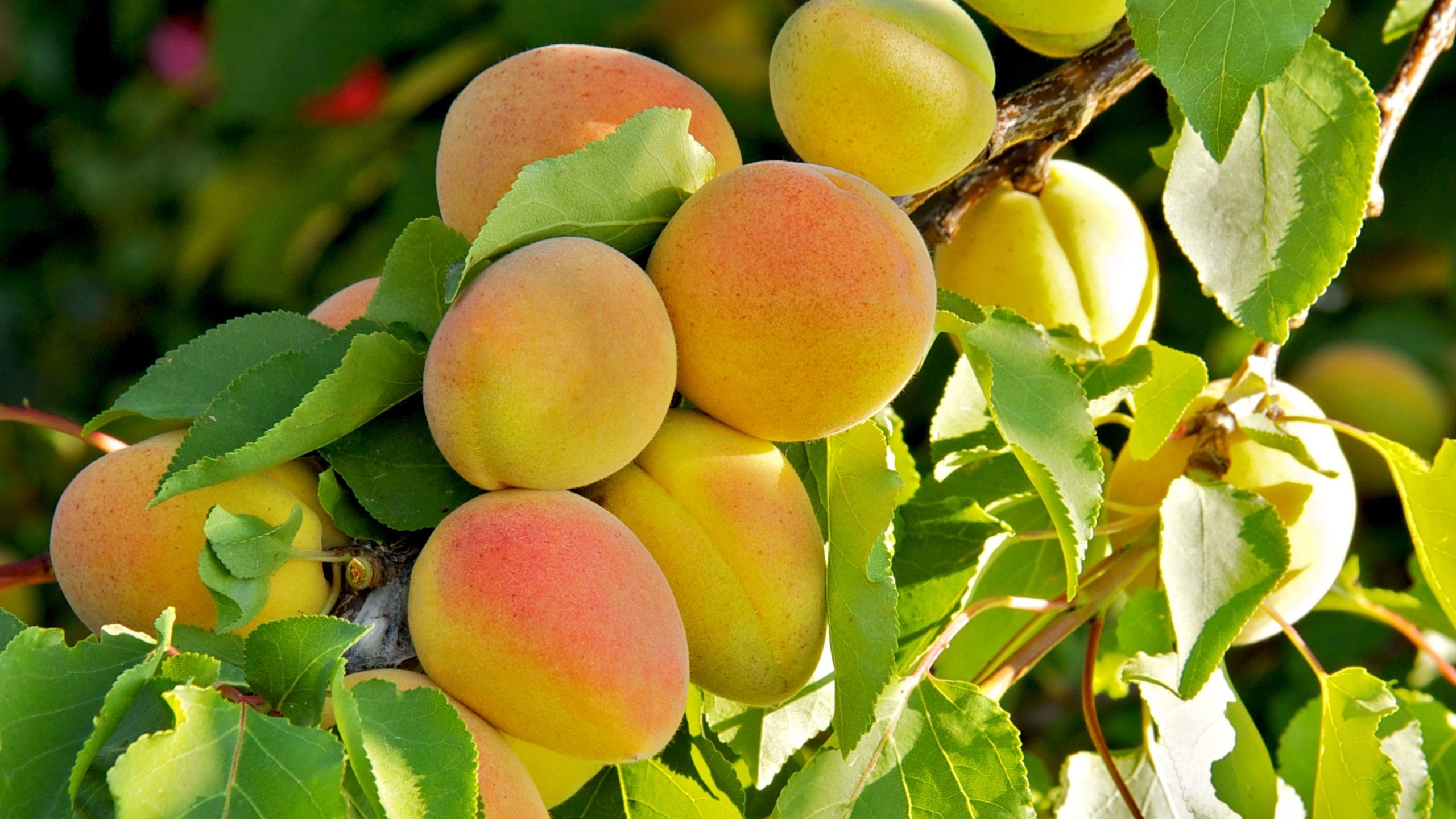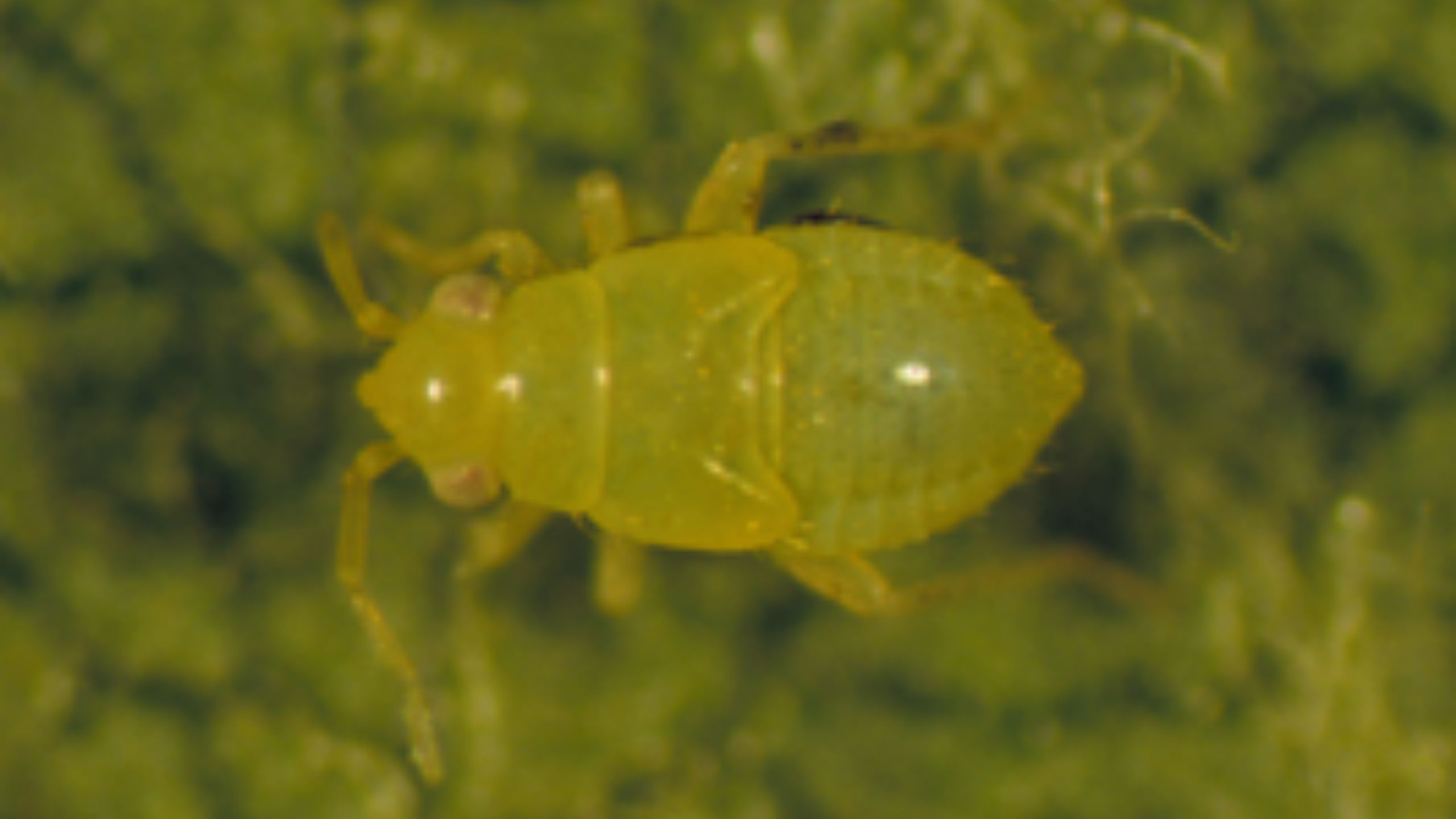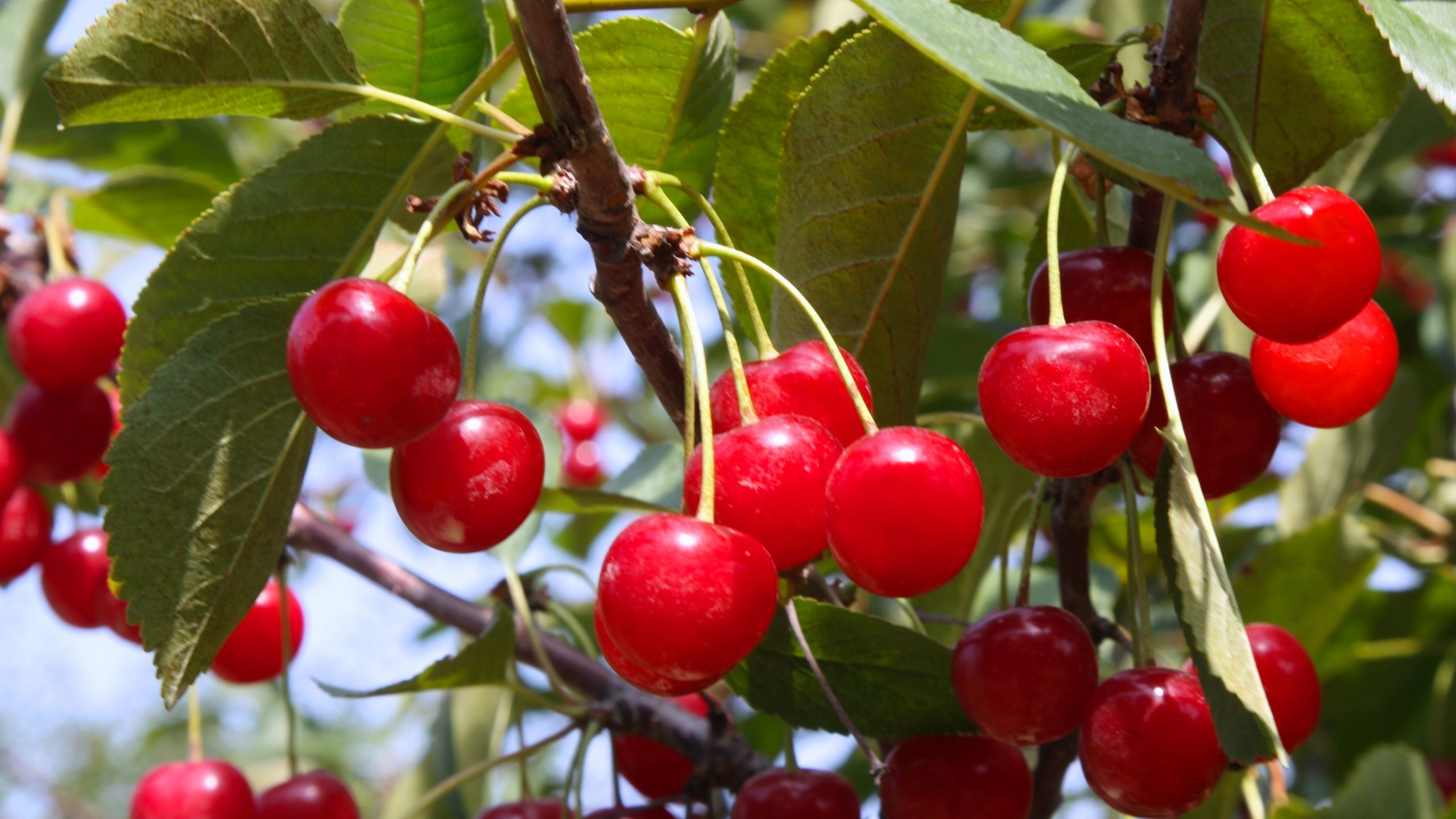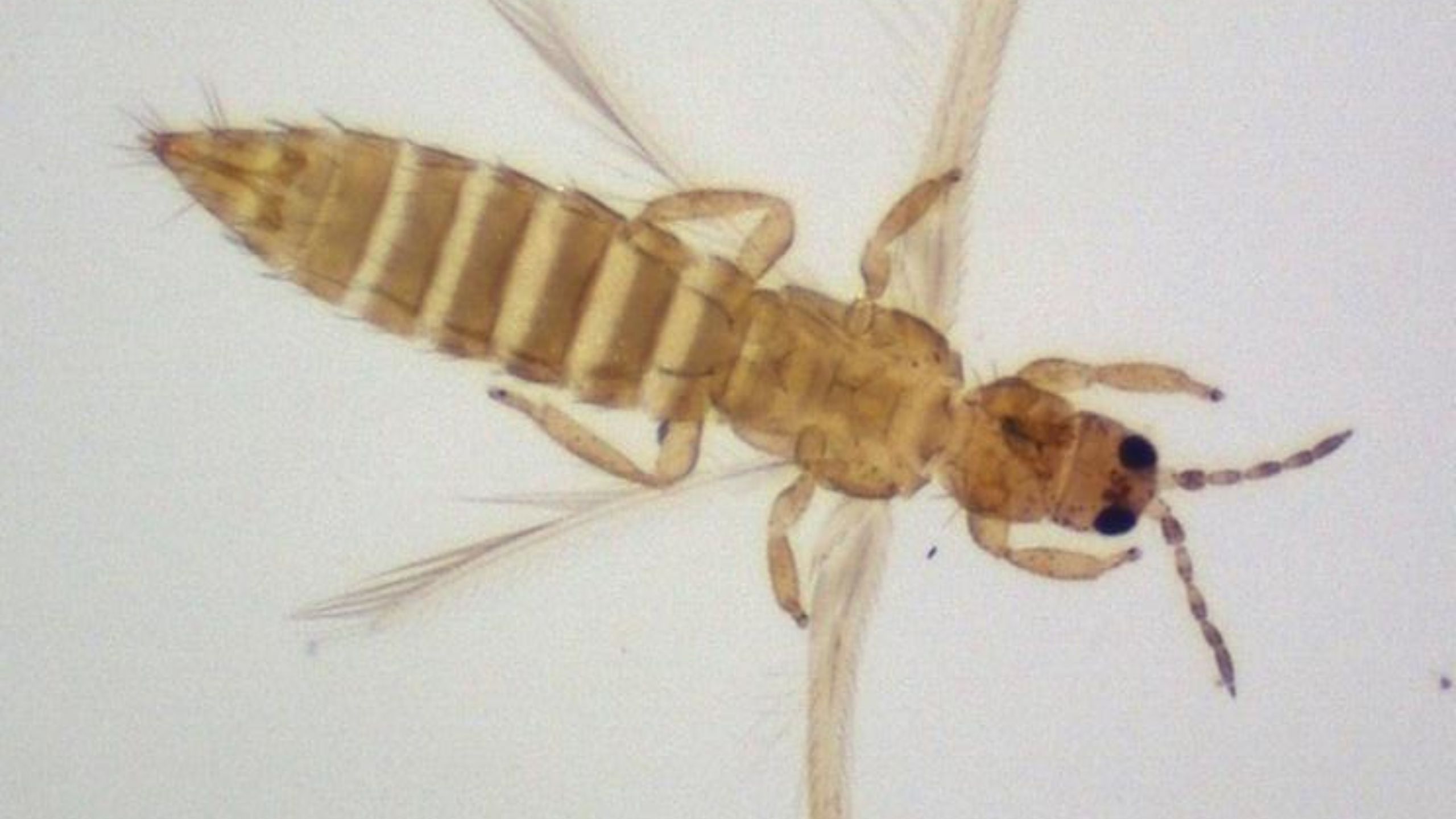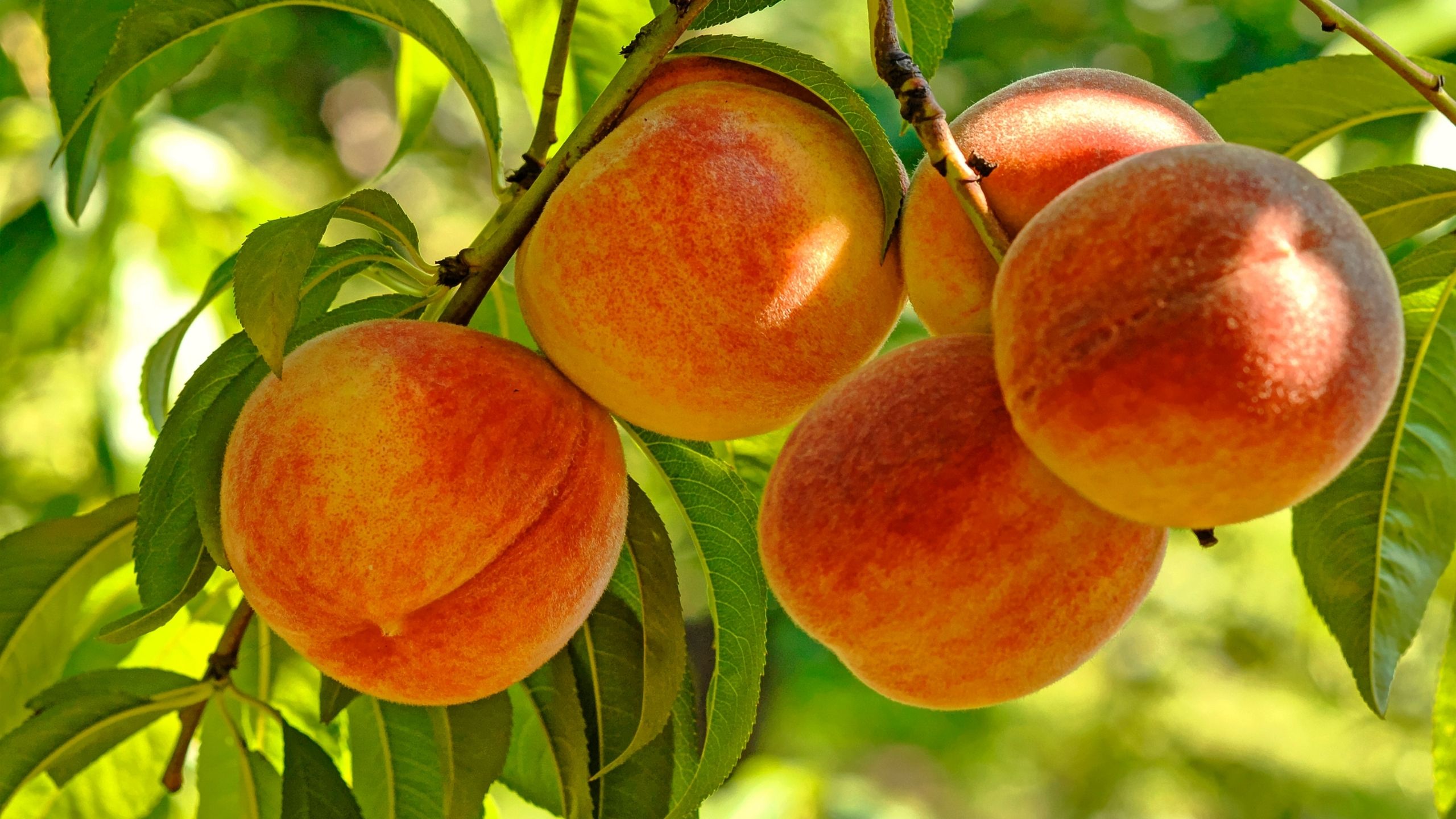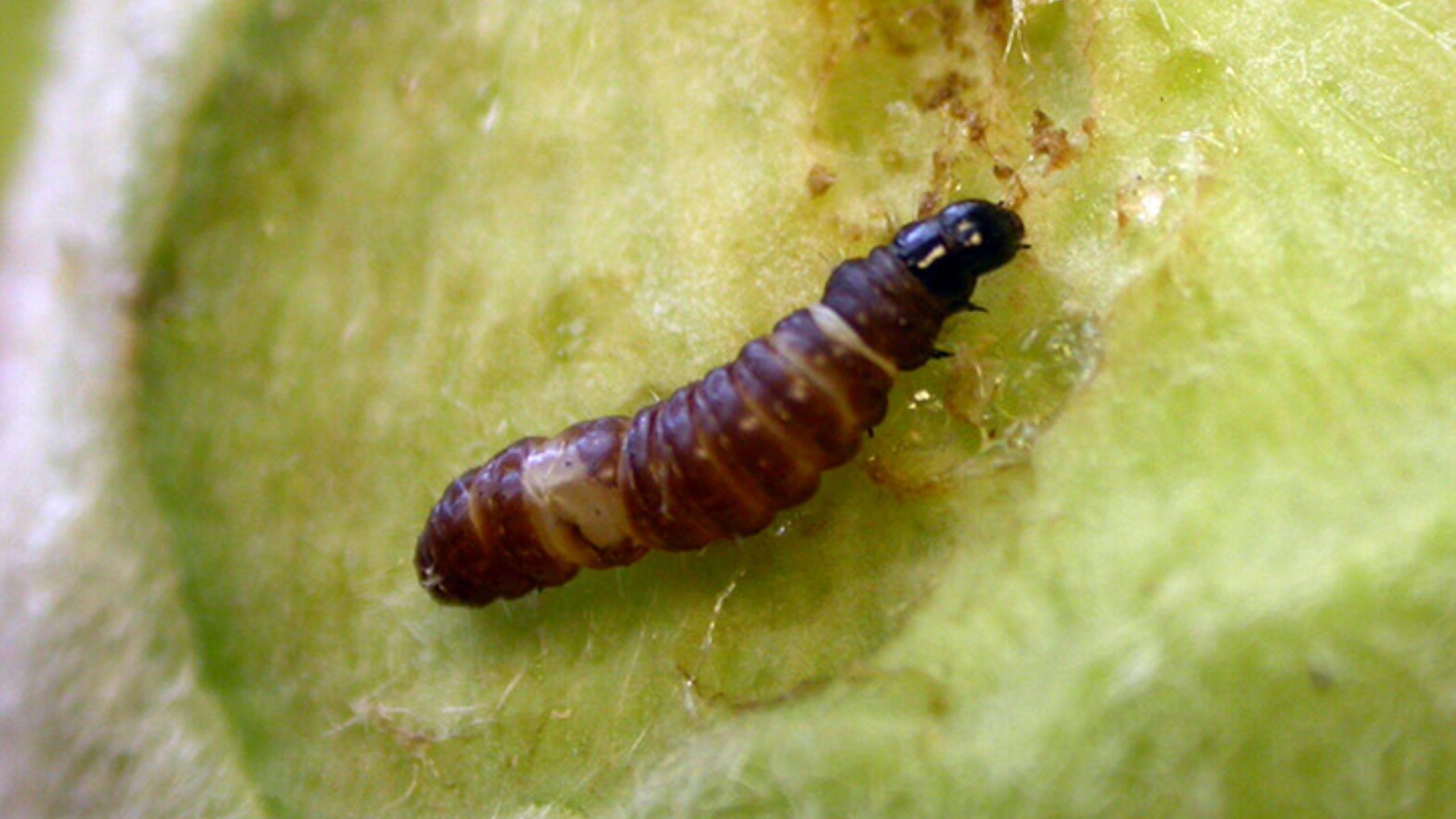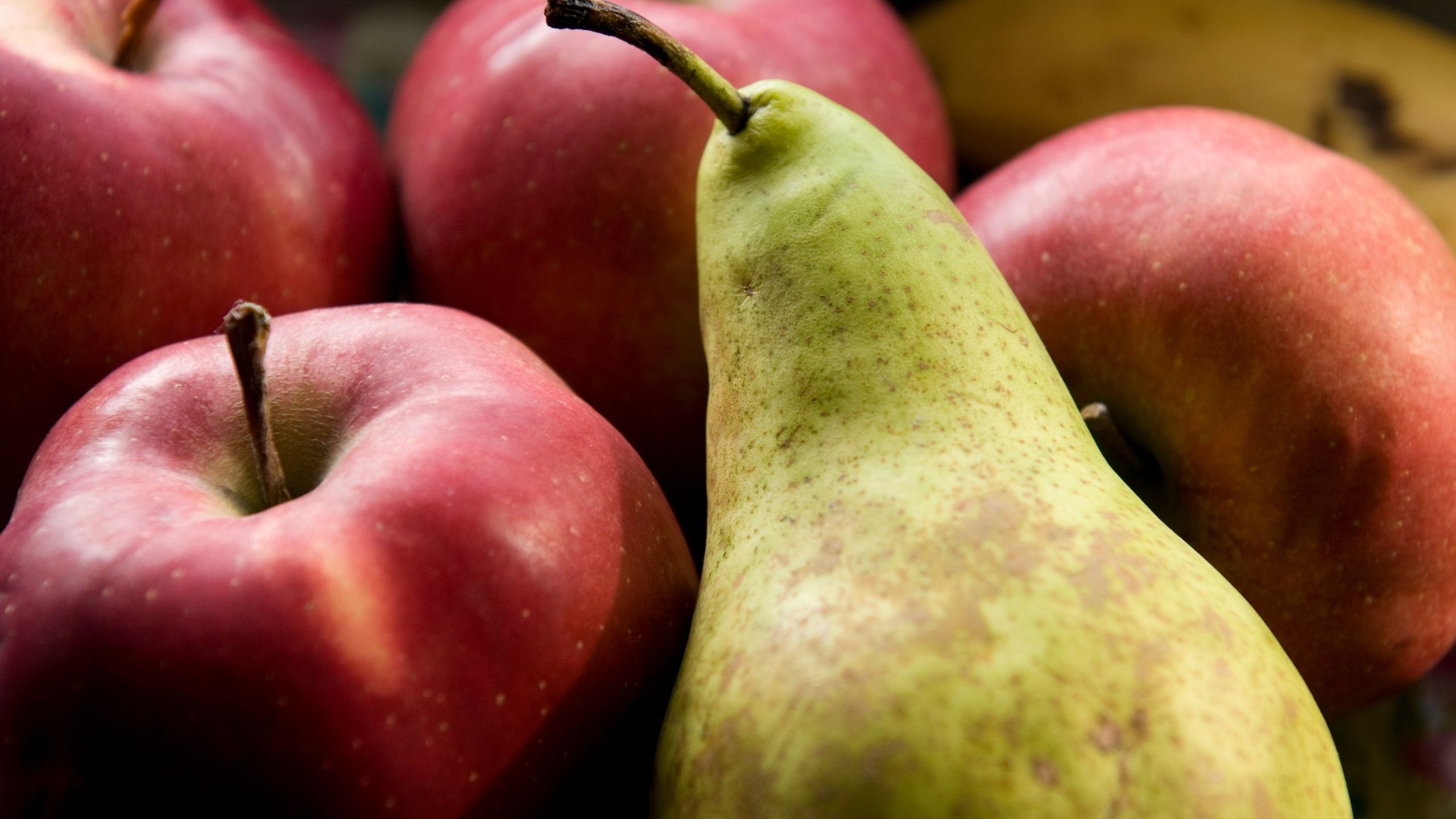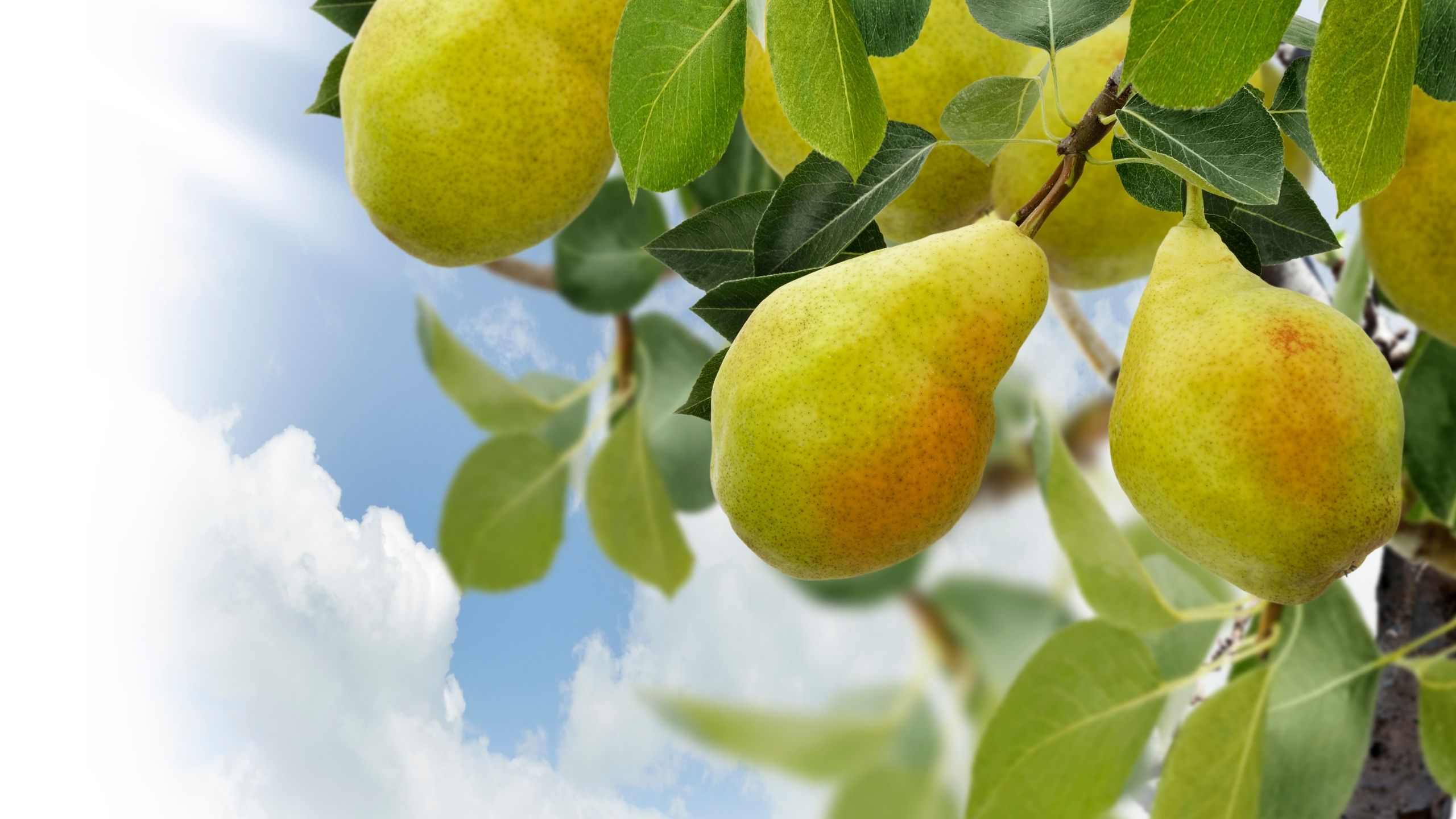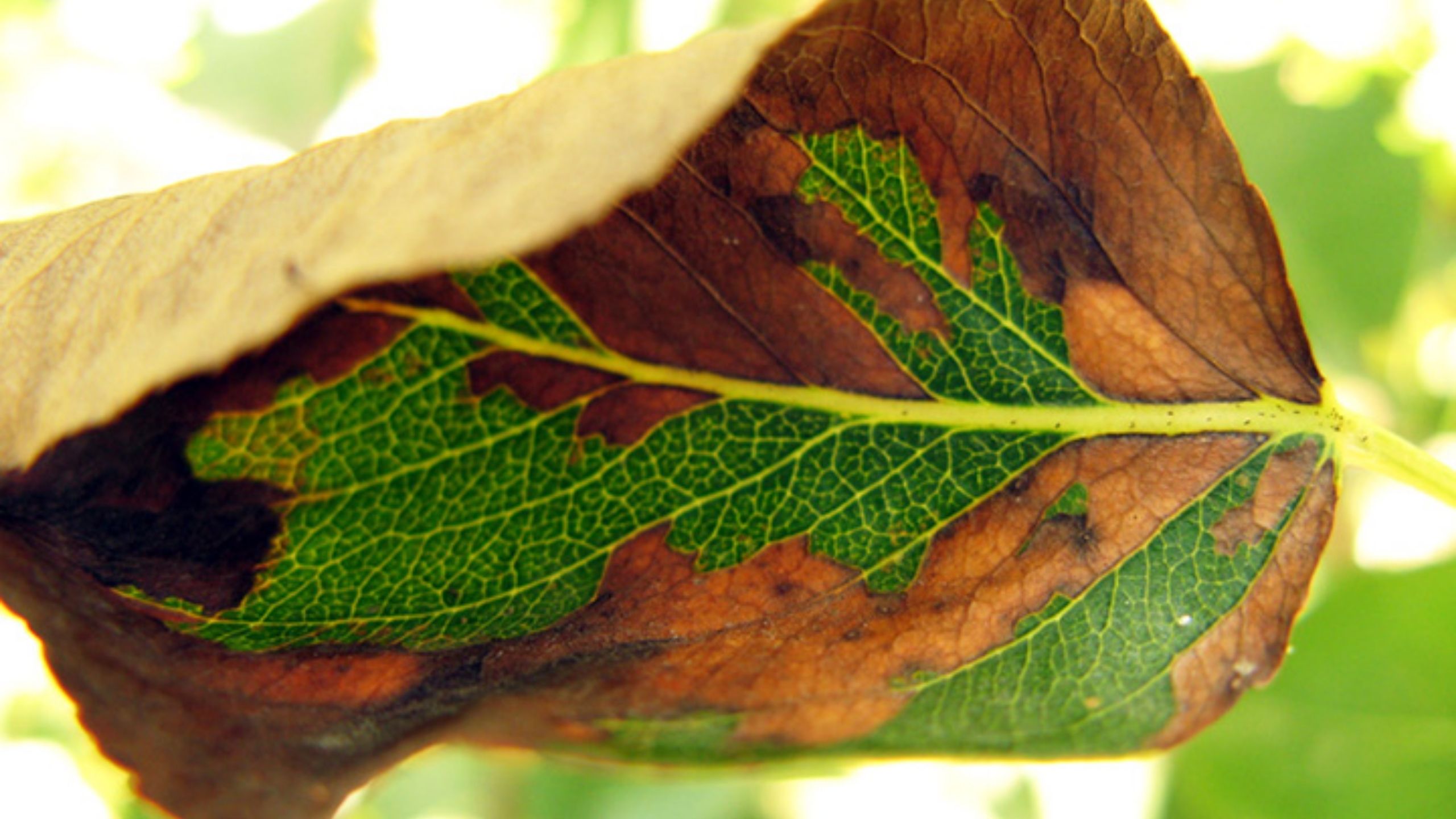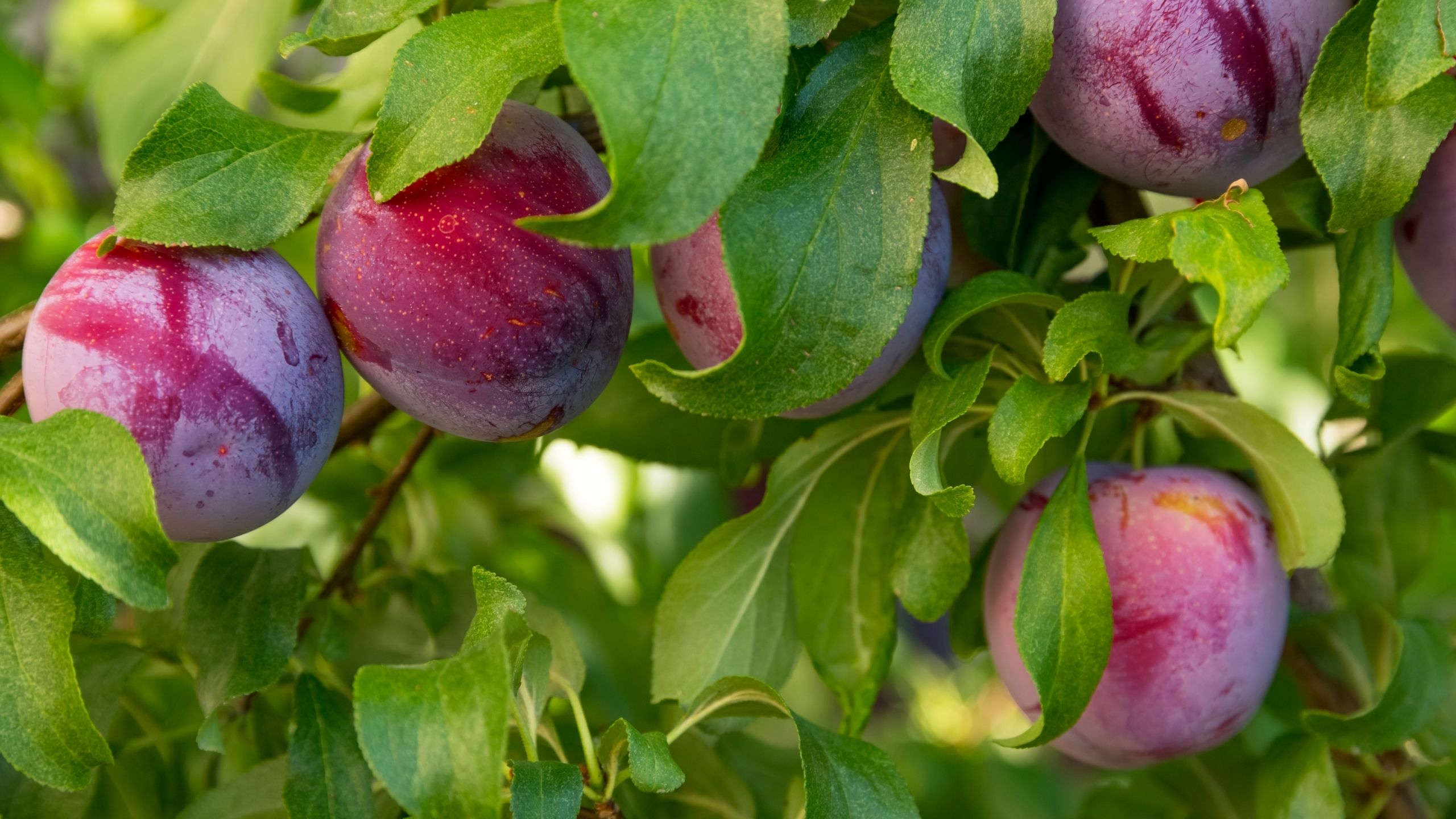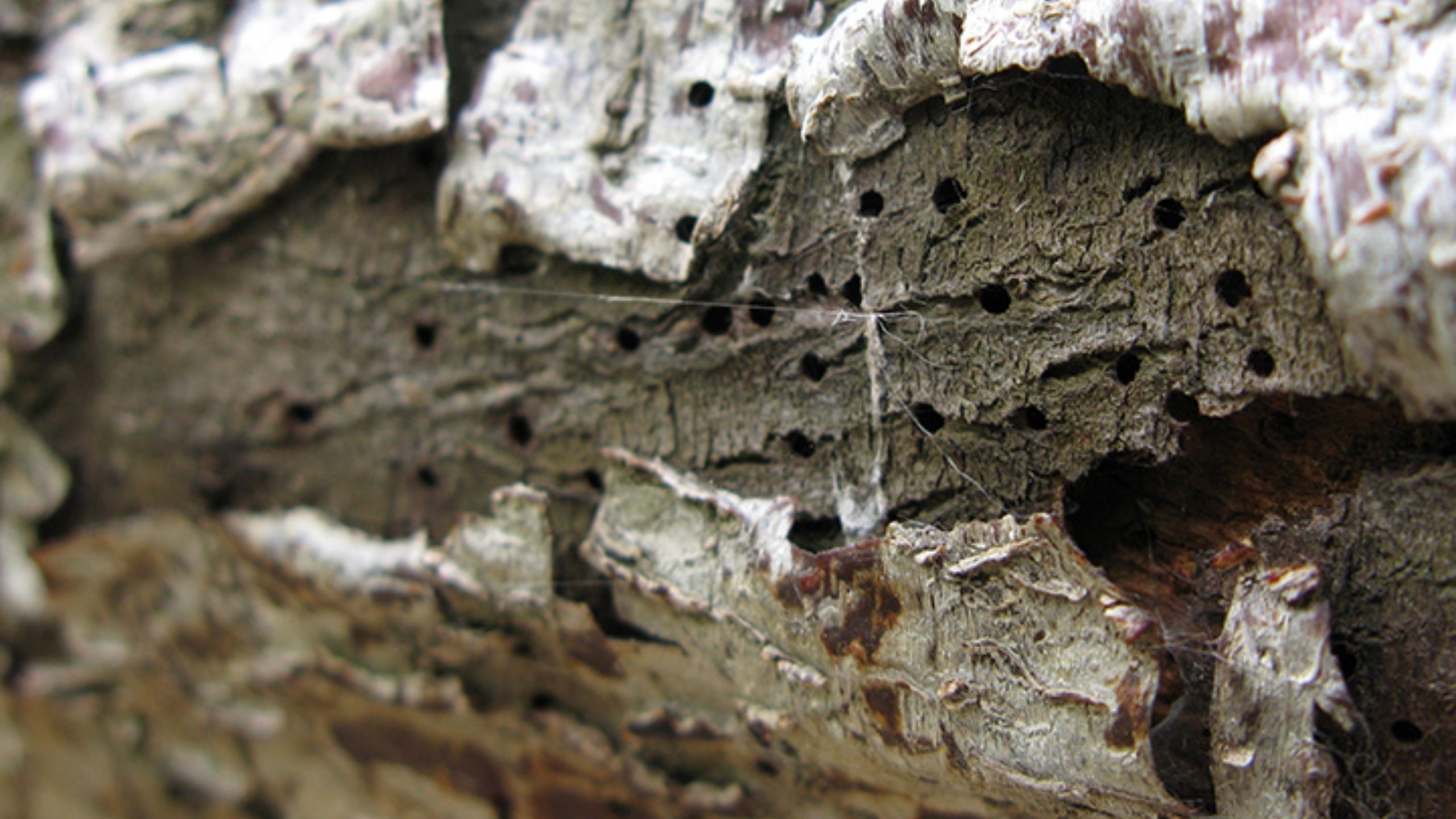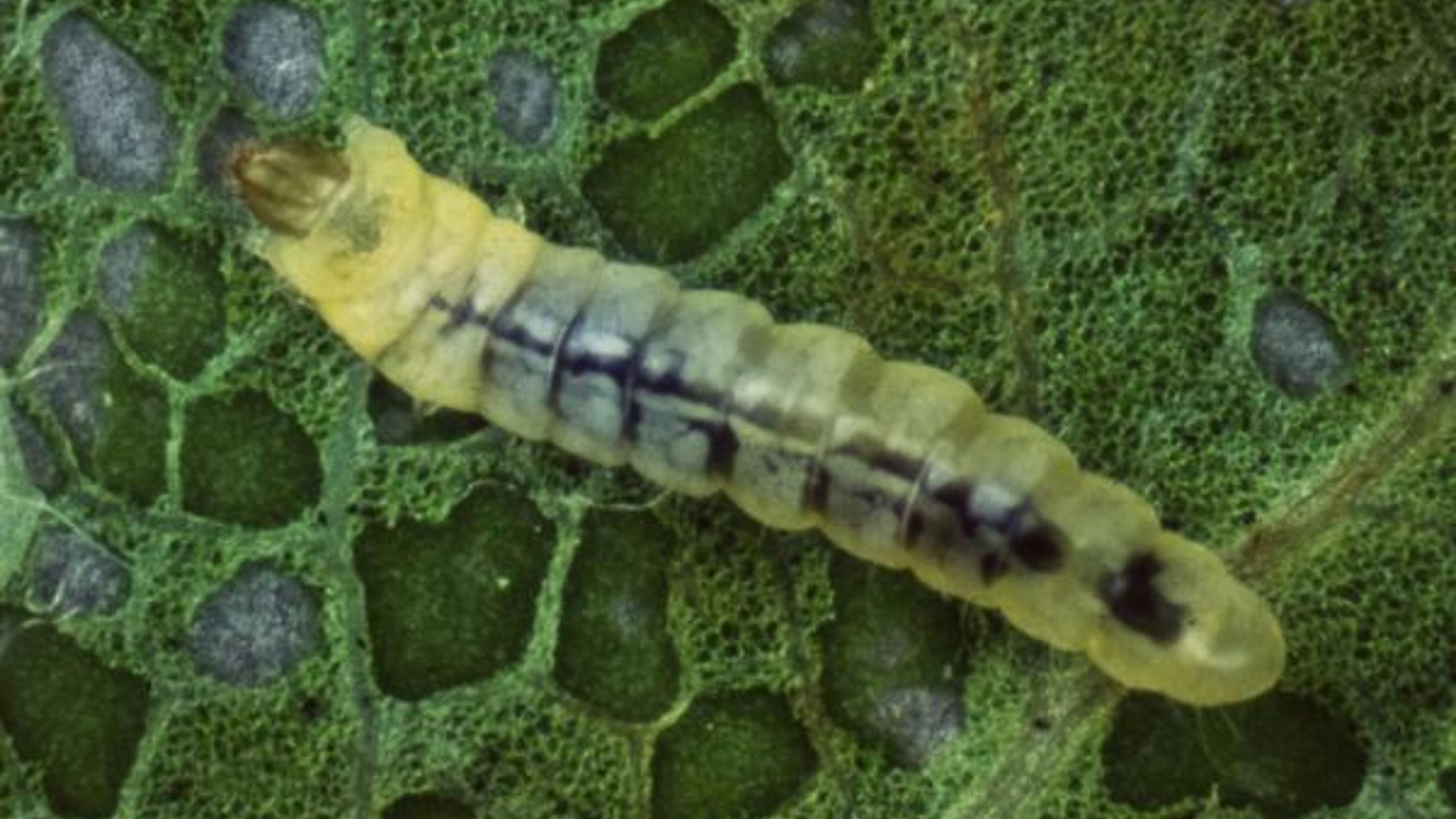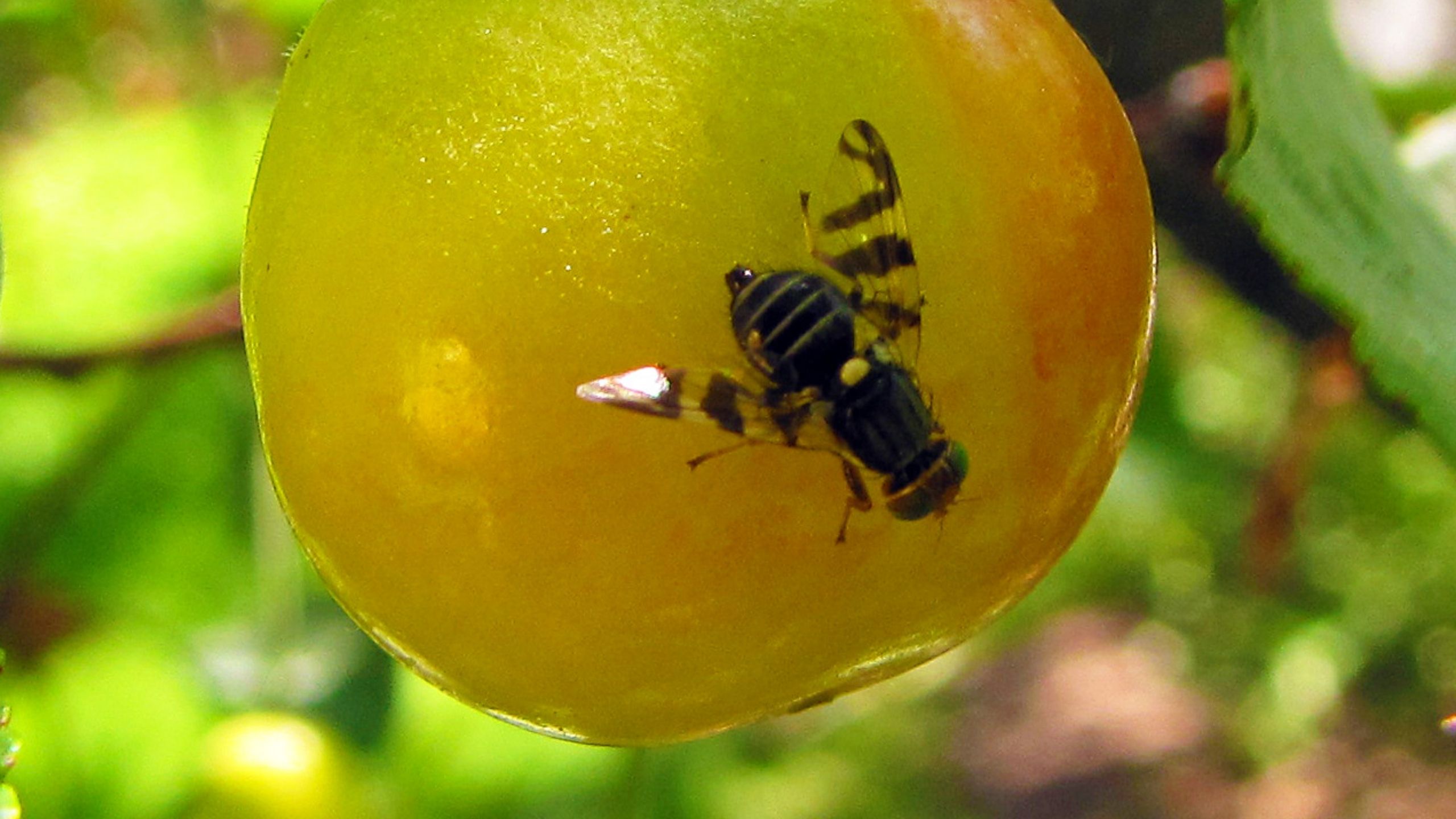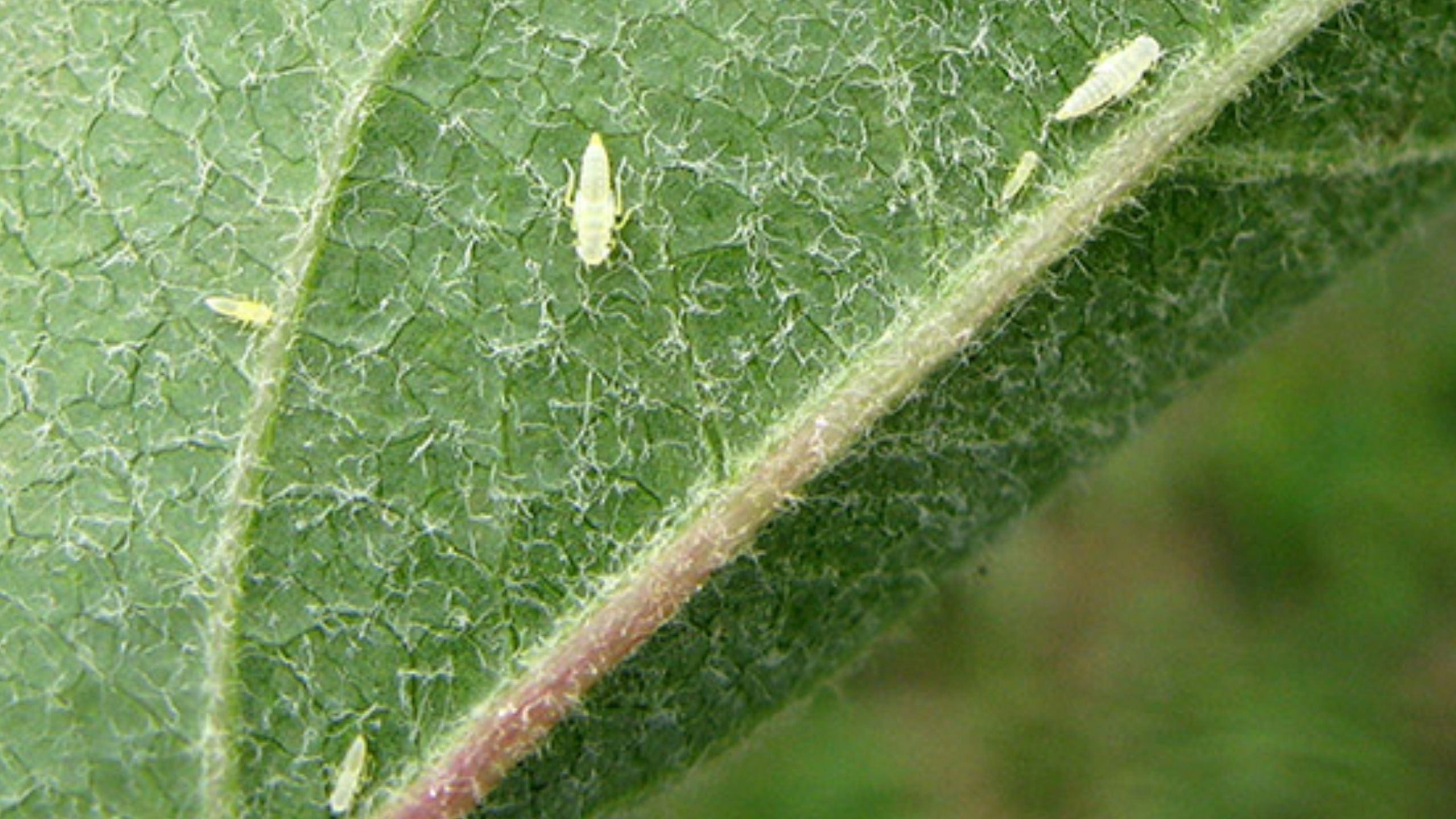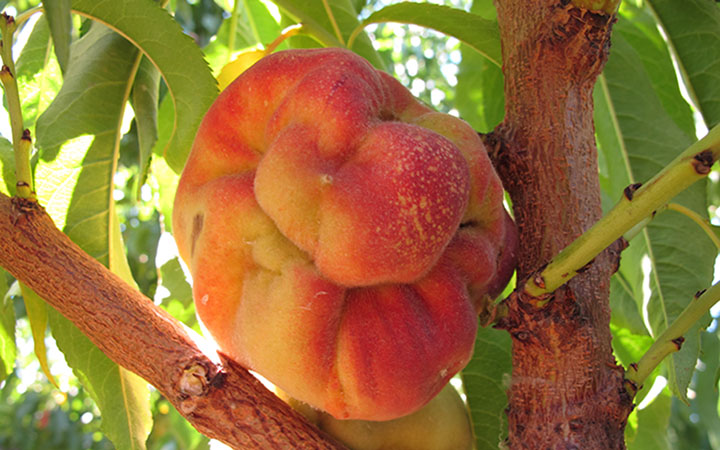Walnut Husk Fly
January 2015
Diane G. Alston, Entomologist (No longer at USU) • Marion Murray, IPM Project Leader • James Barnhill, Weber County Agriculture Agent
Do You Know?
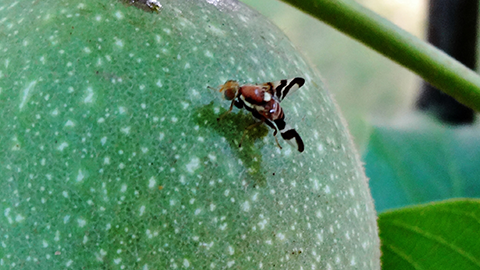
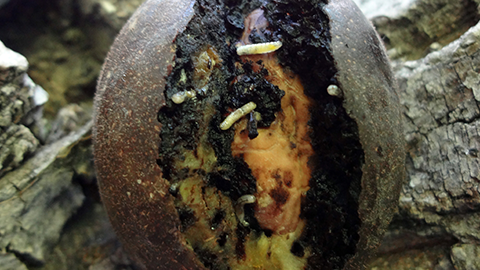

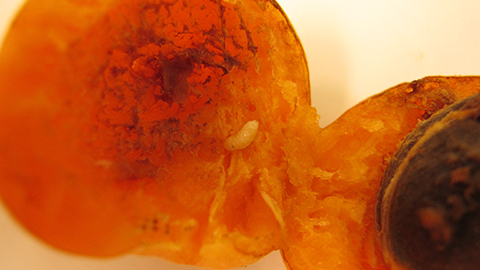
- Walnut husk fly infests black and English walnuts, and late-maturing apricot and peach fruits when infested walnuts are nearby.
- Damage is caused by egg-laying punctures and larvae developing inside husks and fruits.
- Infested walnut husks can be difficult to remove; early-season infestations cause shriveled kernels.
- Non-chemical options include sanitation, ground barriers, tolerant cultivars, and predation by chickens and other fowl.
- Reduced-risk insecticides and attractant baits can provide effective control.
Walnut husk fly (Order Diptera, Family Tephritidae; Fig. 1) is the most common insect pest of walnuts in Utah. Husk fly larvae (maggots) tunnel in walnut husks, causing them to soften and decay, and stain the shell (Fig. 2). Damaged husks are difficult to remove. If husk fly infestation occurs early in kernel development, nuts may shrivel, darken, become moldy, and drop from the tree (Fig. 3). For commercial producers, discolored shells result in reduced quality for in-shell sales, and nut loss lowers profits. For home gardeners, difficult removal of softened husks is the primary problem. The husk fly also infests ripe apricot and peach fruits, usually only when infested walnuts are nearby. The larvae chew tunnels in fruits causing reduced quality and decay of the flesh (Fig. 4).
The walnut husk fly is native to North America east of the Rocky Mountains. It was first detected in the West in California in 1926, and by the 1950s had spread to the Northwest (Riedl 1993). In Utah, it commonly occurs in urban areas where black and English walnut trees are grown. The fly is most abundant in the late summer and early fall when developing walnuts are most available. Primary management relies on the use of insecticides; however, sanitation and cultural practices will reduce infestation levels. Use of traps for monitoring adult activity and a degree-day model, based on daily temperatures, can improve timing of management actions.
Hosts
- English and black walnuts
- Apricot
- Peach
Description and Life History

Adult: Monitoring stage (late June to early October)
- Size is slightly smaller than a house fly (1/4 inch or 6 mm long); females are larger than males with a pointed abdominal tip (due to the sharp ovipositor or egg-laying device)
- Body is tawny brown with a prominent yellow spot on the lower thorax (back) (Fig. 1)
- Eyes are iridescent green
- Wings are clear with dark bands; the wing-tip-band forms a distinctive inverted V-shape (Fig. 6)
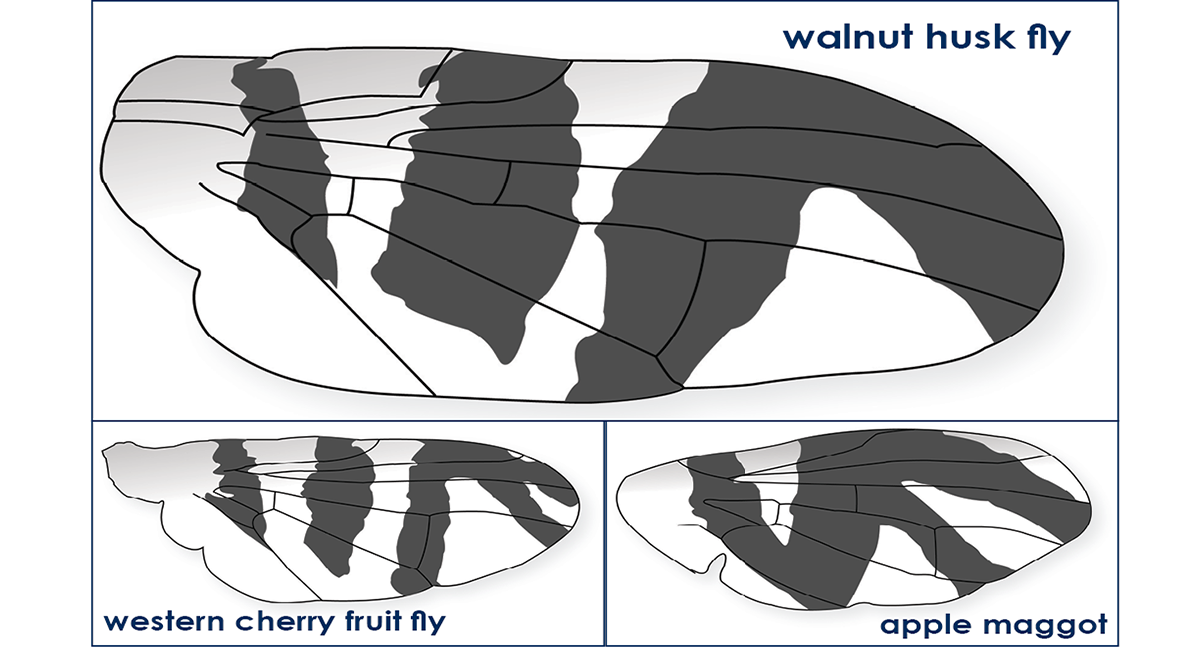
Egg: Inserted In small clusters in walnut husks and host fruits
- Pearly-white, elongate, and slightly curved (1/25 inch or 1 mm long)
Larva: Damaging stage, tunnels in husk and fruit flesh
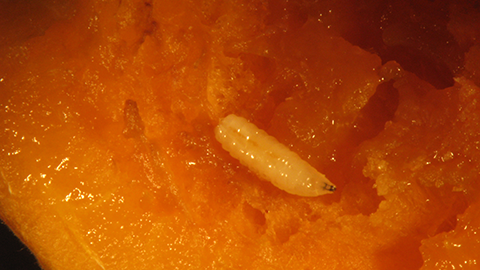
- Legless, white- to cream-colored, turning yellow as it matures
- Body is cylindrical, increasing in size with maturity from about ¼ to ½ inch long (6 to 13 mm)
- Head is tapered with two black mouth hooks (Fig. 7)
Pupa: Overwintering stage, in the soil
- Resembles an oversized brown grain of wheat (about 1/4 inch or 6 mm long)
Adult flies emerge from pupae in the soil under host trees from late June to early October. Adults do not migrate far, but remain on a single walnut tree or group of trees as long as there are nuts available. Mating and egglaying typically begins 10 days to 4 weeks after emergence (Riedl and Hoying 1980). A female can live for 3 to 4 weeks and lay several hundred eggs over her lifespan. Female flies insert their eggs in small clusters under the skin of walnut husks, peach, or apricot fruits. Eggs typically hatch in 5 to 7 days, and larvae burrow throughout the husk or fruit. Larvae have 3 instars, or stages, and complete development in 3 to 5 weeks; at the shorter end of the interval when temperatures are warm. Larvae bore out of the husk or fruit, drop to the ground, and burrow into the soil to pupate. Walnut husk flies survive the winter as pupae in the soil. Most individuals will emerge as adult flies the following summer; however, a few will remain in diapause (dormancy) for 2 or more years.
Injury
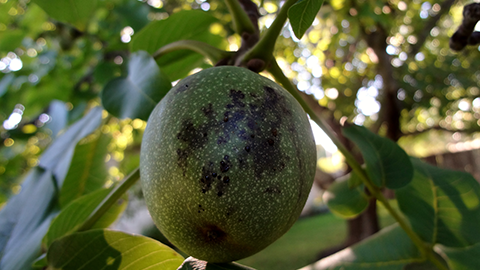
The walnut husk fly is primarily a mid- to late-season pest (August and September). Early-maturing English walnut cultivars may escape injury. Egg-laying punctures cause dark spots on the husk (Fig. 8). Larvae feed inside walnut husks, turning them soft and black. Soft parts of the husk will decay and stain the nutshell (Fig. 2). Damaged husks are difficult to remove and nut-shell stain will decrease the retail value of unshelled nuts. Husk fly infestation of walnuts in July to early-August may cause shriveled and moldy kernels (Fig. 3) which often abort from the tree. For peach and apricot, typically only later-maturing cultivars are attacked. The pinprick egg-laying punctures are barely visible; however, larvae tunneling within the flesh reduce fruit quality and may make fruit inedible (Fig. 4).
Management
Insecticides are the primary management tool once an infestation of walnut husk fly is detected; however, use of non-chemical methods first can reduce the amount of insecticides necessary to protect walnuts and susceptible fruits.
Cultural and Physical Controls
Sanitation. Removal of dropped walnuts and host fruits on the ground in July and August, and after harvest, will reduce the number of larvae that are able to burrow into the soil for pupation. Ground sanitation practices will lower the number of flies that emerge in the following year. Nut and fruit removal can be achieved by raking and disposal, or chopping with an efficient flail mower that will cut the husks and fruit into small enough pieces that the husk fly larvae will be killed. Maintain a “clean” orchard wherein the walnut husk fly population is kept at low levels. High populations are more difficult to control, even with insecticides. In commercial orchards or latematuring apricot and peach cultivars, remove nearby walnut trees to eliminate the primary source of walnut husk fly.
Ground Barriers. Landscape fabric and other dense mulches can be placed on the ground underneath the entire canopy of walnut trees to prevent husk fly larvae from burrowing into the soil to pupate, and adults from emerging from the soil. A temporary tarp can be used under infested trees to collect dropped fruit. After harvest, its contents should be carefully disposed.
Tolerant Cultivars. Research in northern California has found that the English walnut cultivars ‘Chandler’ and ‘Howard’ are more tolerant of walnut husk fly, and that infestations occur later in the season resulting in fewer infested nuts (Coates 2004). The cultivars ‘Payne’, ‘Serr’, ‘Hartley’, ‘Franquette’, and ‘Tulare’ are highly susceptible to husk fly. Late-maturing peach and apricot cultivars are at higher risk for infestation by husk fly if they are grown near walnut trees.
Husk Removal. Walnut husk fly may not be of concern to some home gardeners because the nutmeats of most walnuts are not affected, and shell staining is only an aesthetic issue. Husk removal can be improved by placing nuts in a damp burlap bag for several days, which will soften the husks. Dispose of infested husks in a sealed plastic bag.
Biological Control
There are few natural enemies of walnut husk fly. A predatory mite, Pyemotes ventricosus, and an anthocorid bug, Triphleps insidiosus, have been reported to feed on eggs; and predatory ants and some spiders have been seen preying on larvae and adults (Riedl 1993). Some wild birds may prey on adult husk flies, but predation rates are low. Chicken and other fowl will eat fruit fly larvae and pupae. Of all biological control agents, fowl allowed to forage under infested walnut and fruit trees are likely to have the greatest impact on reducing populations.
Plant Growth Regulator
To hasten walnut husk maturity and husk split late in the season, apply the plant growth regulator ethephon (Ethephon and Ethrel; see label for use directions).
Insecticides
Insecticide treatments should be timed to prevent female flies from laying eggs in husks and fruit. Use a combination of trapping and the degree-day model to determine optimal timing to prevent infestation. Tables 2 and 3 provide examples of products for home and commercial use.
Monitoring: Adult Trapping. Adult husk flies locate host nuts and fruits by chemical (odor) and visual (color and shape) cues. The best trap for monitoring is a yellow rectangular sticky trap, such as Pherocon AM™ (apple maggot). It is important to add a tie- or staple-on container of ammonium carbonate or ammonium acetate as this “super-charger” will improve trap catch. The downside is that the ammonia bait will also attract non-target flies and other insects (Riedl and Hislop 1985).
Place traps on the shady side of host trees near developing nuts or fruits, at least 6 ft high (see Table 1 for timing). Use at least two traps per 10 acres in commercial orchards, and place them in trees that have had previous husk fly injury. In home gardens, place one trap per host tree, and at least two traps per site.
Maintain and check traps one to two times per week throughout husk fly flight. Record the number of walnut husk flies and remove all insects and debris to keep adhesive surfaces clear. Replace traps and refill or replace ammonia baits at least once per month.
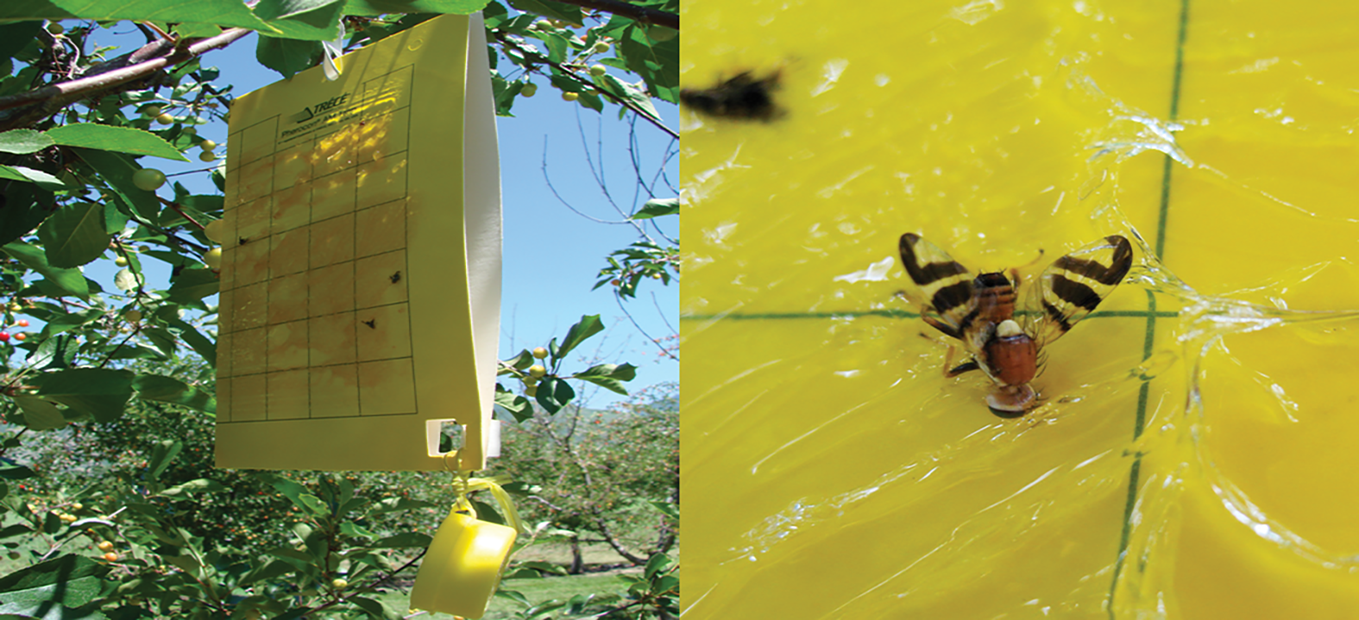
Keep a record of husk fly capture for each trap location to determine first fly emergence, timing of first spray, fly population size, and evaluate the success of your management program. More than one species of fruit fly may be caught on the traps. Inspect the wing banding pattern to confirm the species (Fig. 6). Western cherry fruit fly and apple maggot are two other common tephritid fruit flies in Utah.
Treatment Timing. Consider the history of walnut husk fly populations and infestation to guide timing of insecticide sprays. First adult emergence and beginning of egglaying will tend to be earlier in sites with abundant walnut husk fly.
There are two options to determine when to start treatment:
- Hang traps at the appropriate time and check them daily (see Table 1). When fly counts increase sharply over a 3-day period, apply spinosad or GF-120 immediately, or if using another registered insecticide, apply within 7-10 days (refer to insecticide section below).
- Follow the degree day model. Depending on the product used, start treatment as shown in Table 1.
Degree Day Model Information
A degree day (DD) is a measure of heat accumulation, and can be useful in making predictions of insect activity. A DD model for walnut husk fly was developed in Oregon (Table 1). In northern California, it has not been accurate for predicting husk fly activity in walnut orchards; however, the model can still provide information about general timing of husk fly activity (Robert Van Steenwyk, personal communication).
Beginning March 1, daily maximum and minimum temperatures are used to calculate DD accumulations above the lower threshold for development (41°F for walnut husk fly). The Utah Climate Center provides DD information for fruit production areas in Utah on the TRAPs web page: climate.usu.edu/traps.
The user first selects a weather station on the map or in the drop-down menu. Next, select western cherry fruit fly from the pest drop-down menu (uses same development thresholds as walnut husk fly). Click the submit button. The results table will provide cumulative DD for the selected location.
Note: DD values (shown in Table 1) determine insect activity and management recommendations.
Treatment Application. Maintain insecticide protection until walnut husks split or through fruit harvest for apricot and peach, based on the protection interval stated on the label. Once walnut husks split, they are no longer susceptible to walnut husk fly.
To prevent development of insecticide resistance, rotate the class of insecticide (see mode of action classifications for insecticides below). Select insecticides that are safer for beneficial insects and mites to reduce the likelihood of flaring spider mites and other secondary pests. For example, insecticides such as carbaryl, malathion, and the synthetic pyrethroids (e.g., gamma-cyhalothrin, cyfluthrin) are toxic to predatory mites.
No insecticides are currently registered for soil application for control of walnut husk fly.
Table 1. Degree day (DD) model for walnut husk fly (Kasana and AliNiazee 1997).
| DD since March 1 (°F) | Event | Recommendation | Typical calendar date (northern Utah) |
|---|---|---|---|
| 1600 | Set out traps | Mid- to late June | |
| 1900 | First emergence of flies expected | Check traps daily | Late June to early July |
| 2220 | First mature females expected | If using spinosad or GF-120, apply now and repeat every 7 days | Early to mid-July |
| 2480 | Beginning of egg-laying | If using other insecticides, apply now and repeat according to label | Mid-July |
| 2700 | First egg hatch | Late July | |
| 3150 | 50% adult emergence | Continue checking traps for adults; if numbers decline, reduce or discontinue applications | Early August |
| 3460 | First larval exit | Mid-August |
Home Use Insecticides
Bait Spray: a food bait mixed with insecticide attracts adult husk flies to more readily ingest the insecticide. Apply bait sprays as large, evenly spaced droplets. An advantage of bait sprays is that complete coverage of the tree is not necessary as the flies are attracted to the droplets.
- 4 to 6 Tbsp molasses per gallon of water plus spinosad concentrate; MOA = 5; residual = 7-14 days (Pickel 2014)
Table 2. Examples of HOME USE insecticides registered in Utah that are effective for control of walnut husk fly.
| DD since March 1 (°F) | Event | Recommendation | Typical calendar date (northern Utah) |
|---|---|---|---|
| Malathion | malathion | 1 | 7 |
| Sevin | carbaryl | 1 | 7-14 |
| Fertilome Triple Action, PyganicO | pyrethrin | 3 | 3-5 |
| Spectracide Triazide | gamma-cyhalothrin | 3 | 14 |
| Ortho Flower, Fruit and Vegetable | acetamiprid | 4 | 10-14 |
| Bonide Captain Jack’s, Fertilome Spinosad Lawn and Garden Insect Spray, Gardens Alive Bull’s-Eye Bioinsecticide, Green Light Lawn and Garden Spray with Spinosad, Monterey Garden Insect Spray | spinosad | 5 | 5-7 |
| SurroundO | kaolin clay | physical | 3-5; repels adults; a suppressant only |
Commercial Insecticides
Bait Spray: use a pre-mixed bait product or mix commercial baits with one of the insecticides listed below. Start applications at first fly emergence and repeat every 7-14 days, reducing the interval following rain events and as nuts and fruits mature. Use a volume of 30 to 80 oz water per acre, and apply as a spot spray, such as with an ATV-mounted electric-pump sprayer with side-directed nozzles. By adding bait to the spray, tree coverage is not critical and alternate row, aerial, and hand gun applications are all effective (Pickel et al. 2014, Van Steenwyk et al. 2004, and Van Steenwyk et al. 2010).
- GF-120 Naturalyte Fruit Fly Bait (pre-mixed spinosad bait product); MOA = 5
- corn gluten meal (Nu-Lure Bait) + one of the insecticides listed below
- corn steep liquor (Monterey Insect Bait) + one of the insecticides listed below
Table 3. Examples of COMMERCIAL insecticides registered in Utah that are effective for control of walnut husk fly
| DD since March 1 (°F) | Event | Recommendation | Typical calendar date (northern Utah) |
|---|---|---|---|
| Imidan | phosmet | 1 | 14 |
| Sevin | carbaryl | 1 | 7-14 |
| AsanaR | esfenvalerate | 3 | 14 |
| BattalionR (walnut only) | deltamethrin | 3 | 14 |
| BaythroidR | bifenthrin | 3 | 14 |
| Danitol | fenpropathrin | 3 | 10-14 |
| Mustang Max | zeta-cypermethrin | 3 | 10-14 |
| WarriorR | lambda-cyhalothrin | 3 | 14 |
| Actara (apricot and peach only) | thiamethoxam | 4 | 7-14 |
| Admire Pro many generics | imidacloprid | 4 | 10-14 |
| Assail | acetamiprid | 4 | 10-14 |
| Clutch | clothianidin | 4 | 10-14 |
| Delegate | spinetoram | 5 | 10-14 |
| Success, EntrustO | spinosad | 5 | 5-7 |
| EndigoR | lambda-cyhalothrin/thiamethoxam | 3/4 | 10-14 |
| LeverageR | cyfluthrin/imidacloprid | 3/4 | 10-14 |
| Voliam XpressR | lambda-cyhalothrin/chlorantraniliprole | 3/28 | 14 |
| Voliam Flexi (apricot and peach only) | thiamethoxam/chlorantraniliprole | 4/28 | 10-14 |
*Insecticide mode-of-action (MOA) classification number based on guidelines from the Insecticide Resistance Action Committee. Rotate among insecticide classes to reduce the development of resistance.
OOrganically certified insecticide products.
RRestricted use products that require an applicator license.
Note: All brand names are registered trademarks. Examples of brands may not be all-inclusive, but are meant to provide examples of insecticides registered on fruit trees in Utah. The availability of insecticides and active ingredients in brands can change. Always check the label for active ingredient(s), registered uses, application and safety information, and protection and pre-harvest intervals.
References
- Bush, M., J. Olsen, and A. Antonelli. 2014. Walnut husk fly. Washington State University Extension Fact Sheet FS039E, Pullman, WA.
- Coates, W. W. 2004. Walnut husk fly: varietal susceptibility and quality observations. Walnut Research Report, University of California, Berkeley, CA.
- Kasana, A., and M. T. AliNiazee. 1997. A thermal unit summation model for the phenology of Rhagoletis complete (Diptera: Tephritidae). Journal of the Entomologicial Society of British Columbia 94: 13-18.
- Pickel, C. 2014. Walnut husk fly. In Pests in Gardens and Landscapes, University of California Agriculture and Natural Resources, Davis, CA.
- Pickel, C., J. A. Grant, W. J. Bentley, J. K. Hasey, W. W. Coates, and R. A. Van Steenwyk. 2014. Walnut husk fly in UC Pest Management Guidelines, University of California Agriculture and Natural Resources, Davis, CA.
- Riedl, H. 1993. Walnut husk fly. Orchard pest management: a resource book for the Pacific Northwest (276 pp.), Good Fruit Grower, Yakima, WA.
- Riedl, H., and R. Hislop. 1985. Visual attraction of the walnut husk fly (Diptera: Tephritidae) to color rectangles and spheres. Environmental Entomology 14 (6): 810-814.
- Riedl, H., and S. A. Hoying. 1980. Seasonal patterns of emergence, flight activity and oviposition of the walnut husk fly in northern California. Environmental Entomology 9 (5): 567-571.
- Van Steenwyk, R. A., S. K. Zolbrod, J. A. Hasey, R. B. Elkins, J. A. Grant, and W. W. Coates. 2004. Control of walnut husk fly using reduced-risk products. Walnut Research Report, University of California, Berkeley, CA.
- Van Steenwyk, R. A., W. W. Coates, J. K. Hasey, R. B. Elkins, and J. A. Grant. 2010. Walnut husk fly control with reduced risk insecticides. Acta Horticulturae 861: 375-382.



